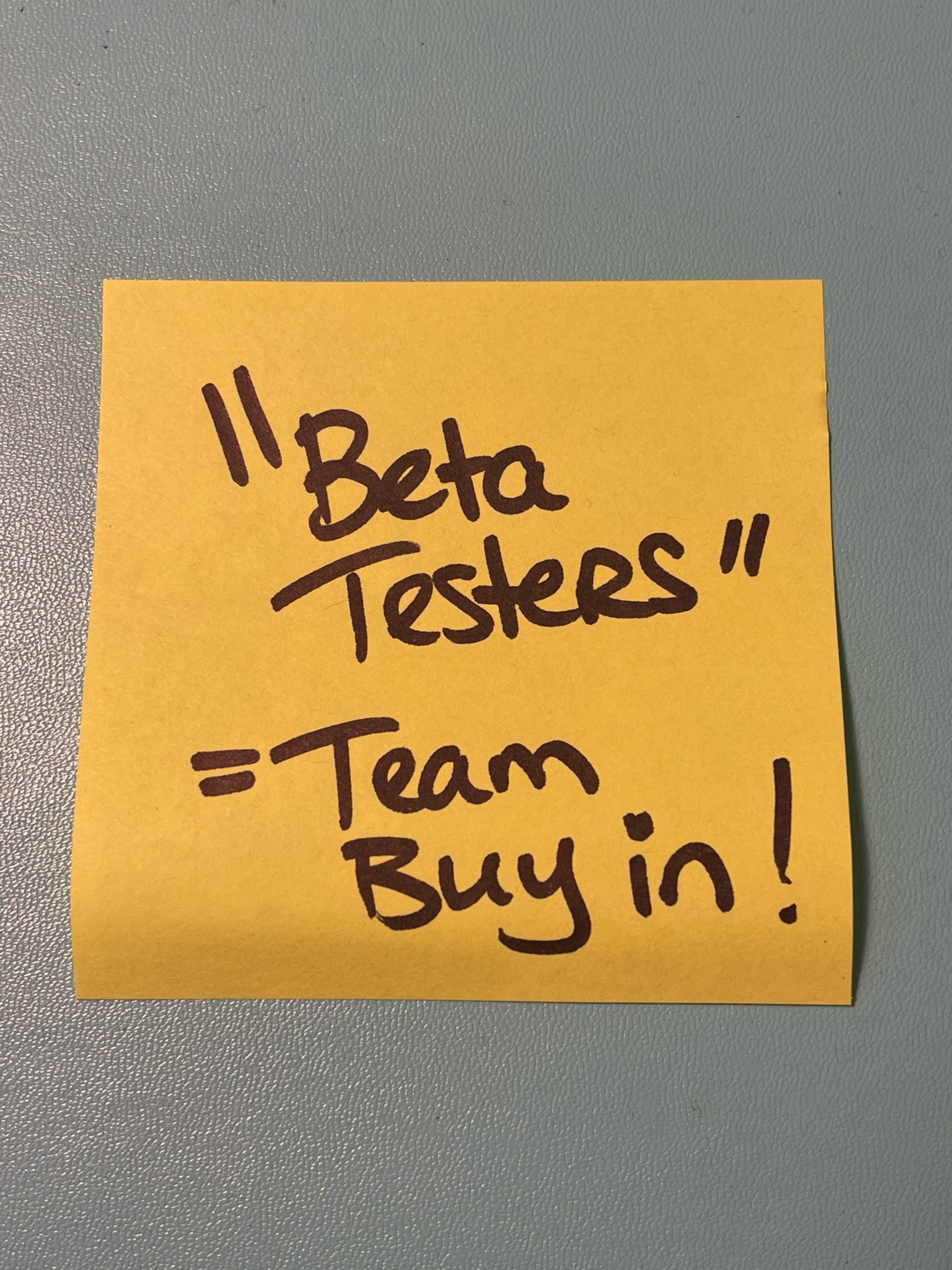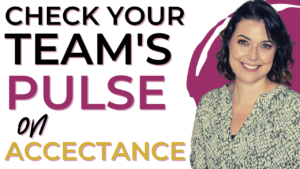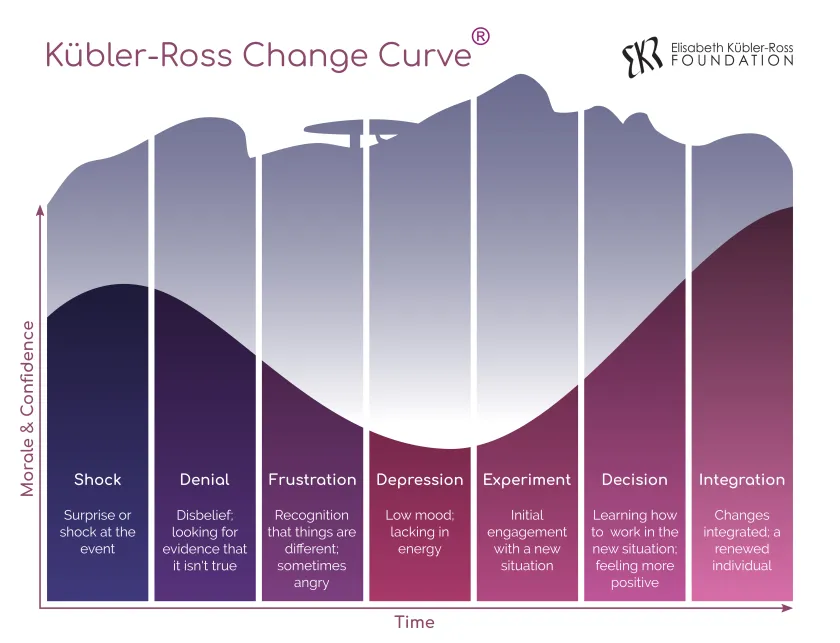How to Get Buy-In From Your Insurance Team
Has this ever happened in your insurance agency? You go to your monthly agency meeting and share some exciting news.
After careful research, speaking to other successful agency owners, and selecting a solution to a problem the entire team has commented on, you get to share a solution.
You inform the team that change is coming. This is a good change, right? You have a solution to a known agency challenge.
Unfortunately, your message is met with blank stares. You see some team members shoot glances at each other. Then every team member looks at the agency’s Queen Bee (more on that soon). Your most tenured team member speaks up and it’s not positive.
All your momentum and excitement goes out the window. Queen Bee starts listing all the reasons it won’t work. Everything from, “What happens on Tuesday when Jenny comes in 15 minutes late,” to “Mr. Jones won’t like this,” and the best one, “We don’t have time to learn something new.”
As a leader, what do you do? For many agency owners or leaders, they ask for everyone to try and the meeting ends. The rollout of a new initiative begins and you’re begging people to get started.
Inevitably, with anything new, the first few times the team tries a new strategy, it’s not perfect.
Here comes Queen Bee back in your office to let you know all the ways this doesn’t work and they declare they aren’t doing it anymore and the team isn’t either. The leader, being a bit uncomfortable, ends the conversation. The problem still exists and the agency is out valuable time and resources.
We ask if this has ever happened, but we know it happens a lot in many agencies.
APP Team Update
Agency Win: On the time management program, we had several agencies quit notebooks cold turkey and ahead of schedule. Way to go to embrace the suck!
Lesson of the Month: Every team needs carrots and sticks. You can’t limit yourself to benefits, there must be consequences as well!
Professional Goal Update: We are on track with our Q3 plans and the new customer service program is coming along very well!
Current Obsession: Real Real: So many great things with tags still on them.
Where is APP This Week? Kelly Donahue-Piro: Wenatchee, WA – Launching Agency Retention with Libke Insurance!
Why is Getting Team Buy-In Harder Than it Should Be?
If you haven’t been in this situation before—you simply have not led hard enough. You may be a little too soft in charging forward on initiatives or looking to get a bit too much consensus. In every agency I have worked with, we always faced resistance.
Have you ever had the pleasure of announcing to an agency they will start calling every client once a year for a renewal review, or over the next six weeks notepads will be considered contraband? (Find me at an insurance event and I’ll share the agency that went on strike over notepads)
The reality is, this is a learned pattern from your team. They understand that if they find flaws and protest, you will get distracted, and they will be able to go back to the old ways. Now, in defense of most insurance teams—they manage risk. All change represents risk, so change for many insurance team members can be overwhelming, scary, and cause a great deal of uncertainty.
In addition, in too many agencies, the rollout of change is just plain awful. It’s a mention in a meeting with a lack of direction, no clarity, and high expectations.
Bottom line: We can do better.
Let me outline the top obstacles Agency Performance Partners experiences when outlining agency change:

- Queen Bee: This is a term I coined a while back when working with agencies. You go into an agency and there is an unofficial leader present. I may ask the agency owner who the managers and leaders are and this person’s name is never disclosed. Queen bees have no title or power, but they have ALL the power. Similar to a mob boss, everyone reports to them behind the scenes and the team looks to queen bee for what they think before acting. Like a puppet master, they are working against you behind the scenes. Oftentimes, this person is a tenured team member who is incredibly “loyal” (in tenure) and they make you feel like you could not do this without them. They are insurance encyclopedias and you rarely hear client complaints. On the surface, they are top employees, but they are running a nasty subculture. If a new team member starts at the agency and queen bee isn’t a fan, give it six months, they will get you to fire them by policing all of their work or they will run the person off with their nastiness. Queen bees are tricky and often require a skilled professional to disarm them.
- Lack of Details: Remember, most agency team members are service-based. This means they love detail, clarity, and expectations. When you outline a change and make it seem like a small thing without much detail, you send them into an internal spiral. The lack of details and clear expectations paralyzes them.
- Unclear on the “Why”: Going back to Simon Sinek, start with why most change is outlined as more work. When rolling out any new initiative, it is important you start every conversation with the “why.” Why are you doing this? What problem will it solve? And most importantly—What will the team’s lives look like if it succeeds?
- One-Time Bomb Drop: This happens frequently. The change gets announced and then follow-up is nonexistent. The leader thinks they told the team (in reality, they talked at the team) and expects everyone to leave the meeting and get to it. Weeks go by and the leader is “busy” (a word we hate) and they begin to wonder if the new initiative is working. They poke around and find out it’s not. Meetings get called and excuses are heard. Everyone gets called out and the culture takes a turn for the worst. A clear rollout plan and check-ins could have saved a lot of drama.
- “Try” Mentality: Let me be clear, there is no try in an agency. There is either do or don’t. The second an agency team thinks it’s a trial, you will get zero buy-in. I have witnessed many agencies tell their teams “just try it.” You just made this new initiative a recommendation rather than a requirement. Just like any diet or life change, trying a diet will have you starting again on Monday. The agency has to be fully committed to success, change, and accountability.
- No Carrot & No Stick: When outlining something new, you need to have a carrot and a stick. It’s important the team sees you reward them for going out of their comfort zone. Trying something new and getting it to work is difficult. You want to applaud them for winning, it feels great and it makes the hard days a little easier. In the same vein, there has to be a clear consequence to not getting onboard. For this reason, we often lean on team incentive strategies or direct consequences (such as a commission cut, not qualifying for an end-of-year bonus, or having to work the day after Thanksgiving—I’m ruthless, right?
Take a look at this list, does your agency have any of these challenges when dealing with change and getting buy-in? If so, let’s help you get it right for the next time.
6 Steps to Getting Team Buy-In
If you’re feeling down about your past leadership experiences—don’t! These six steps come from over 15 years of experience and working with over 1,000 agencies of all different shapes and sizes. It’s our pleasure to share with you how we drive buy-in. Earning buy-in is a very fluid situation and requires some on-the-field tactics. However, this should give your agency a leg up on the next new initiative. My biggest fear is agencies becoming Blockbuster Video because we won’t adopt change, so we are all for helping insurance agencies get this right!
Step 1: The Research and Planning Phase
This may sound crazy, but many agency owners jump at a solution they learn from a social media group, podcast, or email (if you found us that way, thank you!). As a problem solver, I get it. You see a challenge and it gets you charged up to dive in and solve it and be the agency’s hero.
Slow down, cowboy.
When learning about a challenge, you need to take a few steps to confirm and clarify the new problem to solve:
- Is the person venting, or is it a real systematic consistent problem?
- Can you identify metrics around the problem? (Example: Is your retention really lagging based on metrics or are you feeling like you have lost a few good clients?)
- Do you have a clear understanding of the challenge by discussing it with more than one person?
- Can you write down the challenge, the impact it is having on your agency, and the priority level of solving it?
- Is now the best time to tackle this problem or should you schedule finding a solution for another quarter? (Example: Changing management systems during your biggest renewal season may not be the best idea)
Once you have a clear understanding of the challenge, you can research potential solutions. It’s important you do your homework here. You want to begin your due diligence by researching three potential solutions. Different price points, strategies, and solutions. You don’t have to speak to any salespeople during this phase. Instead, listen and learn. Follow the companies on social media, read online reviews, and, if you can, phone a friend.
Now you can assemble a task force to work on the challenge together. It is important to have different points of view. You should make it clear you have the final decision but you want to hear their points of view and have them understand the solution. During this step, you want to mention to the team that you are looking for solutions.
PRO TIP: Don’t try to solve problems behind a curtain. Most agency team members like to be in the know and understand what is happening. Springing a change on a team member when it’s rolling out is a great way to get everyone’s defenses high!
Step 2: The Beta Test

Note: The APP Agency Efficiency Program does not approve of the use of post-it notes 🙂
Once you and your task force have nailed down a potential solution, it’s time to get a beta tester. This is the person who can help run a trial of the new initiative. This may or may not be a member of the task force. The beta testing group should be comprised of the persons who will have the easiest time with the new plan and the hardest time. Yes, we have a dual approach. We want the beta test team to spread sunshine and cheer (as well as prove it can be done!). Now, we also want the “most difficult” person to beta test the program because they will find all the issues, downsides, and hardships so you can find solutions before the entire team gets involved.
We always recommend a beta test since rolling new programs out to your entire agency seems a bit too aggressive. Let a few people work out the kinks, build the process, and become system matter experts before sharing it with everyone. Getting team buy-in limits problems and the team is able to see it working from afar before everyone dives in.
Step 3: Announcing the Change to the Team
You may be surprised by how important a good rollout is to getting team buy-in. How you announce change to the team is as critical as the change. For this reason, we always recommend a launch party. Not a meeting, a launch party. Parties are way more fun and it sets the stage that the change will be positive!
Launch parties can have themes, prizes, and swag. Your launch party should always include:
- Clear definition of the challenge you are trying to solve
- The steps you took to research the solutions
- Beta Tester Findings
- The Solution
- Timeline
- Training Plan
- Expectations
- What their day will look like after the change is embraced
- Incentives and expectations on adoption (a nice way of saying “consequences”)
- What’s next
- Q&A
All of this should be written down so people can refer back to it. Any follow-up meetings should be on the calendar. This is where the rubber meets the road!
Quote From Your Peers
Continuing the same message and being passionate about making your team better is the only thing that seems to be successful. It’s like you give a little slap in the face to everyone, and then you hit them again with another nudge, and then another nudge, and then another nudge.
At that point, you have three or four people on board and that starts helping the people change and grow.
Sharing the successes and failures with complete open and honest communication with everyone. Group format is crucial with extra attention to the people who are important and haven’t accepted yet.
Jason & Lindsey Fleming, Fleming Agency, Wisconsin
Step 4: You Can’t Communicate Too Much
It takes an adult to hear the same thing 22 times before they remember it… 22 times.
When you think you have communicated clearly to the team, remember this: You may have been working on this for months. They have heard of it for 30 minutes. It will take some time, repetition, and patience.
We recommend the following communication strategy:
- Team Launch Party
- Review it in department meetings
- Review it in your 1:1 coaching meetings
- Set up a team chat channel for questions
- Send out a post-meeting recap
Step 5: Make it Happen

As the new initiative is launched, you need to keep the positive vibes front and center. Each week, you want to have a task for yourself to check in on the program, both from reports and getting a pulse on your team. The reports will show the facts, your team will share their feelings.
Each week, present a state of the union address on the initiative. You need to be transparent and honest, yet lead the team to see the bigger picture. While the team will tend to focus on the negative, you need to find the positive and push that to the front. Slowly but surely, wins will start happening. When you can put priority on the wins and give them light, the team will come along.
I’m reminded of the Kübler-Ross Change Curve:

People actually deal with grief the same way they deal with change. As a leader, you will need to lead them through these stages. Some people will take longer than others. Your job is to believe for them when they can’t quite see it themselves.
As a leader, you need to be consistently consistent with your messaging, check-ins, reporting, and incentives. If you do not have time to champion the initiative, maybe now is not the right time. Or perhaps you need the APP agency assessment so you can better lead your agency and focus on what’s important.
Step 6: Consistency
One of the keys to getting team buy-in is your ability to stay consistent with your team. Your team will pay attention to what you focus on. If buy-in is something you struggle with it’s important that you spend time on the initiative. Make sure you are focused on routine reports, team meetings and pumping up your team.
Conclusion:
In our opinion, it’s easy to champion change. I’ve seen it work; you must have faith the team can do it. However, you’ll need to learn where all the prickly parts are when your team exhibits resistance to change. Because we’ve seen change successfully implemented, we know it’s advantageous to have an expert help facilitate you through the changes.
This way, your agency can limit delays and/or setbacks. Here are a list of common changes we see agencies launch, adopt, and ultimately adapt to. This is typically met with challenges, of course.
As you look at this list, your agency may have embarked on some of these adventures. Perhaps, while reading this blog and reviewing these changes, you wish you had done things differently. Maybe, you’re seeing this list and these changes are everything you want to do, but you know you won’t get team buy-in.
Pssst: This is a hint that you need an agency assessment!.
- Work with virtual assistants
- Change management systems
- Adopt a CRM tool
- Embrace new technologies
- Get your team to be proactive, not reactive
- Get everyone caught up and not backlogged
- Provide more remote working options
- Change phone systems
- Add new and unique roles to the team
- Change compensation/commissions
Quote From Industry Specialists
Our goal at Cover Desk is not to replace the US employee, it’s to give producers and account managers the ability to focus on the customer service experience. Your team can off-load service tasks that prevent them from meeting their sales goals and touching more clients. Virtual assistants are there to support your team, so your team can focus on items that generate revenue and increase retention.
Kelsey Tenaillon, of Cover Desk









